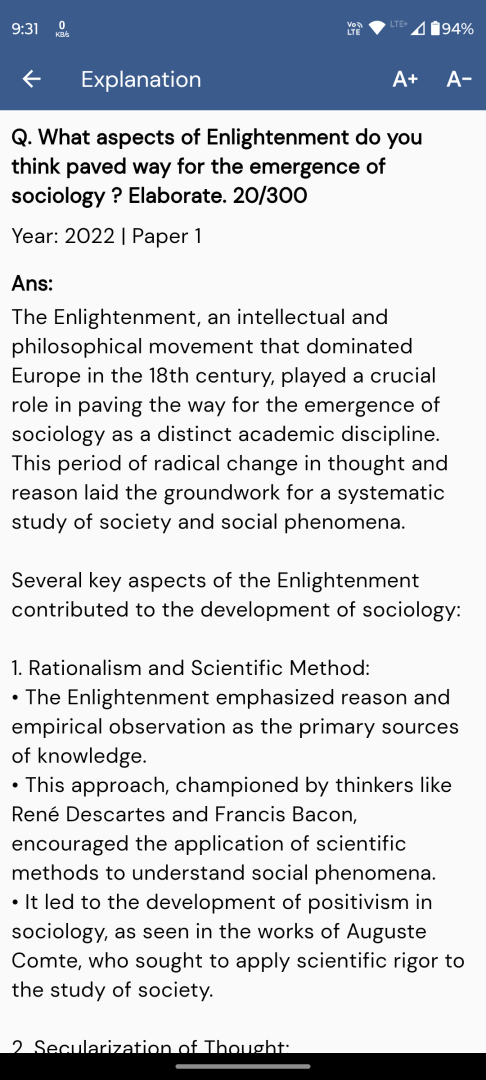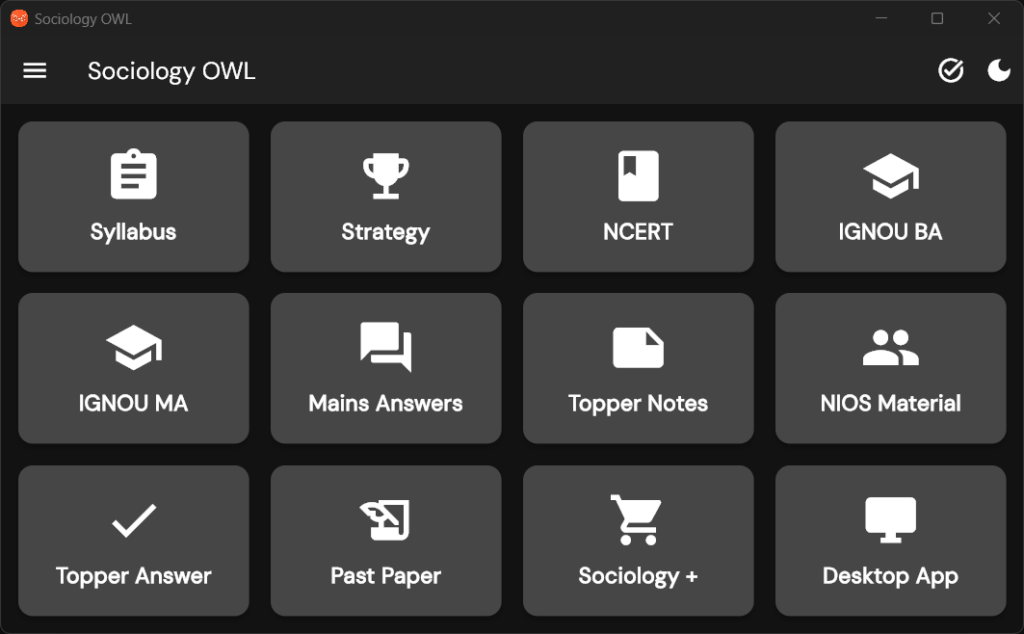Q. What is the nature of relationship between science and religion in modern society? Analyze with suitable examples.
UPSC Sociology 2025 Paper 1
Model Answer:
The relationship between science and religion in modern society transcends simple dichotomy, encompassing conflict, independence, and dialogue. While classical sociologists predicted religion’s decline with scientific rationality, both domains remain influential forces shaping contemporary life.
The Conflict Thesis
This perspective posits fundamental incompatibility between scientific empiricism and religious faith.
• Max Weber’s “disenchantment of the world” thesis suggests rationalization and intellectualization replace supernatural explanations with scientific ones, diminishing religion’s scope.
• Auguste Comte envisioned humanity progressing from theological through metaphysical to positive (scientific) stages.
• Example: The evolution-creationism debates in American schools exemplify ongoing conflict. Similarly, bioethical issues like stem cell research and cloning pit scientific possibilities against religious moral doctrines.
The Independence Thesis (NOMA)
This model proposes science and religion operate in separate, non-conflicting domains.
• Stephen Jay Gould’s “Non-Overlapping Magisteria” (NOMA) argues science covers empirical reality (how the universe works) while religion addresses ultimate meaning and moral values (why we exist).
• Scientists can study the Big Bang’s physics without invalidating personal religious beliefs—one explains ‘how,’ the other ‘why.’
• Example: ISRO scientists conducting prayers before launches demonstrates compartmentalization of scientific practice and religious belief.
The Dialogue and Integration Thesis
Contemporary perspectives recognize potential for constructive engagement and mutual enrichment.
• Robert Merton’s thesis on Puritan ethos fostering the scientific revolution suggests historical synergy between religious values and systematic empirical inquiry.
• Example: Pope Francis’s encyclical ‘Laudato Si’ integrates climate science with religious stewardship. During COVID-19, religious organizations collaborated with health officials, promoting vaccination while adapting practices based on scientific guidelines.
Conclusion:
The science-religion relationship in modernity is neither monolithic conflict nor complete harmony but contextual negotiation ranging from confrontation over factual claims to peaceful coexistence in separate spheres, and collaborative dialogue on shared societal concerns. Both persist as distinct yet influential systems for understanding and navigating contemporary world.





